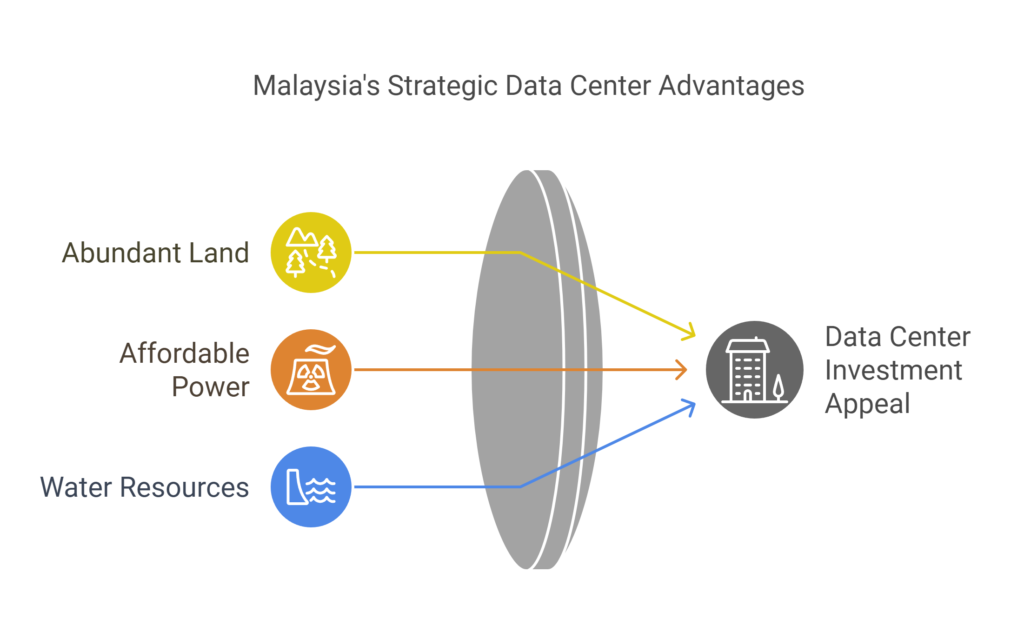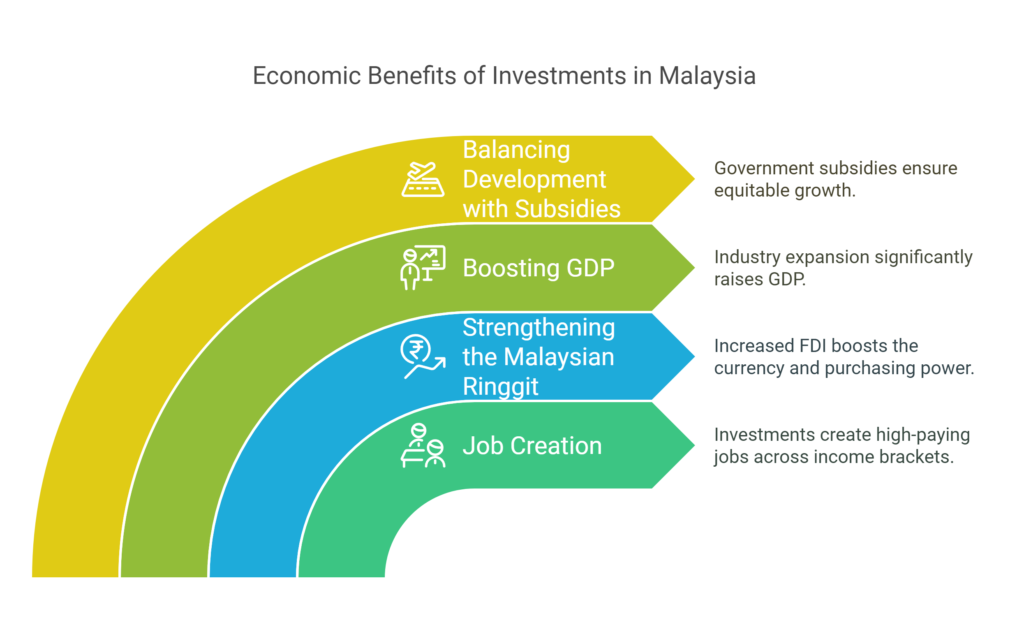Will Malaysia Become the Richest Tech-Driven Economy in ASEAN?
Malaysia is steadily emerging as a top contender to be the richest tech-driven economy in Southeast Asia. This transformation is driven by RM115 billion in investments, positioning Malaysia as a hub for data centers and semiconductors. These developments could redefine the country’s economic future, potentially making Malaysia a rich country admired for its innovation and prosperity.
The RM115 Billion Investment: Will Malaysia Become the Richest Through RM115 Billion Tech Investments?
Over the past three years, Malaysia has attracted RM115 billion in investments for constructing data centers. These facilities are essential to the modern economy, serving as the backbone for storing and managing massive amounts of data. From social media to cloud storage services like Google Drive, data centers are indispensable to today’s digital infrastructure.
As global demand for data skyrockets, Malaysia is uniquely poised to meet this need. The rise of artificial intelligence, accelerated digitalization, and the global economic rebound post-2022 have all contributed to the country’s rapid transformation.
Why Malaysia? Key Factors That Attract Investments
Global giants such as Amazon, Google, and Microsoft are investing heavily in Malaysia due to its strategic advantages:
- Abundant Land
Data centers require vast amounts of land—up to 150,000 square meters per facility. Malaysia offers affordable, spacious locations, especially in regions like Johor and Selangor. - Affordable Power and Subsidies
Malaysia’s electricity tariffs, ranging from 20 to 34 sen per kilowatt-hour, are among the lowest in Southeast Asia. Additionally, the government’s subsidy programs support energy consumption, making operations more cost-effective. - Water Resources
Data centers need significant water supplies for cooling systems. Malaysia’s abundant water resources offer a clear advantage compared to land-scarce countries like Singapore.

This combination of factors makes Malaysia a prime destination for technological investments, further boosting its economic prospects and positioning it among the region’s elite nations.
The Semiconductor Industry: Malaysia’s Rise as a Rich Country
Semiconductors are integral to modern technology, powering everything from smartphones to electric vehicles. Malaysia, particularly Penang, has established itself as a semiconductor hub. In 2023, Penang attracted RM122.8 billion in investments, contributing significantly to Malaysia’s GDP and reinforcing its role in the global supply chain.
The semiconductor industry, bolstered by incentives from the Malaysian government, plays a vital role in making the country a rich country. Malaysia specializes in the testing, packaging, and assembly of semiconductors—a critical step in global manufacturing.
Economic Impact: Malaysia’s Journey to Becoming the Richest in Southeast Asia
The RM115 billion in investments is not just about technological advancements—it’s about elevating the lives of Malaysians. Here’s how:
- Job Creation
These investments create thousands of high-paying jobs, empowering Malaysians across various income brackets, from the B40 to the T15. - Strengthening the Malaysian Ringgit
Increased FDI boosts the Malaysian ringgit, improving the country’s purchasing power and lowering the cost of imported goods like electronics. - Boosting the GDP
As industries like data centers and semiconductors expand, Malaysia’s GDP estimate is expected to rise significantly. With a consistent year-over-year (YOY) growth rate, the country is set to compete with regional giants like Indonesia and Singapore. - Balancing Development with Subsidies
The government’s RON95 petrol subsidy and other supportive measures ensure that economic growth benefits not just the ultra-rich but also middle-income earners.

Malaysia’s Push for Green Energy and Sustainability
While rapid development brings numerous benefits, it also comes with challenges. Data centers consume vast amounts of energy and water, raising environmental concerns. Malaysia’s commitment to green energy is critical for sustaining its growth while meeting global environmental standards.
The government aims to increase the renewable energy mix to 40% by 2035 and 70% by 2050. This ambitious plan ensures that Malaysia remains competitive in the Asia-Pacific region while reducing its carbon footprint.
The Role of Prime Minister Anwar Ibrahim
Prime Minister Anwar Ibrahim has been instrumental in driving policies that attract high-income earners and support economic growth. His administration focuses on creating a balanced economy that benefits all Malaysians, from the M40 to the T20 income groups. By addressing the haves and have-nots, the government ensures that Malaysia’s rise benefits everyone.
Forest City: A Special Financial Zone in Malaysia
Another key development is the establishment of Forest City as a special financial zone. Located near Johor, this project is expected to attract wealthy individuals and investors, further enhancing Malaysia’s economic prospects. With its strategic location and tax incentives, Forest City positions Malaysia as a hub for innovation and global commerce.
Malaysia’s Road Ahead: Challenges and Opportunities
Despite its successes, Malaysia faces challenges:
- Resource Strain: Data centers are resource-intensive, consuming significant amounts of electricity and water.
- Income Inequality: The concentration of investments in Kuala Lumpur, Johor, and Penang could widen the gap between urban and rural areas.
- Environmental Concerns: The push for green energy must be accelerated to ensure sustainable growth.
Nevertheless, the government’s commitment to balanced development, as seen in initiatives like thepetrol subsidy and investment incentives, provides hope for a prosperous future.
Conclusion: Malaysia’s Rise as a Tech Powerhouse
Malaysia is on a transformative journey, poised to become one of Southeast Asia’s richest nations by 2025. With RM115 billion in investments, a booming semiconductor industry, and a focus on sustainability, the country is building a future where all Malaysians can thrive.
As Malaysia continues to grow, it reaffirms its status as a global technology hub. The question is no longer whether Malaysia will rise—it’s how high it will soar.




